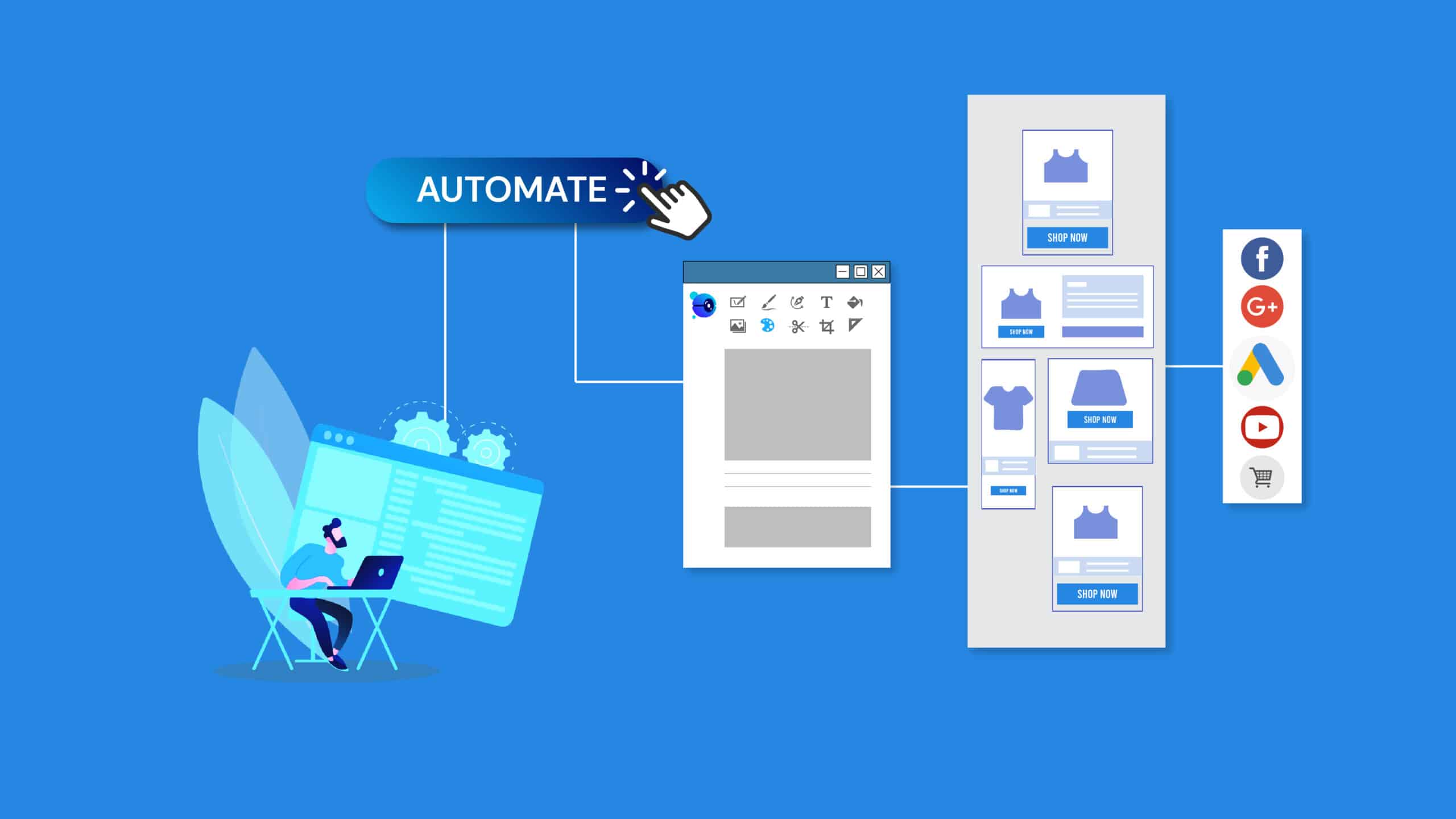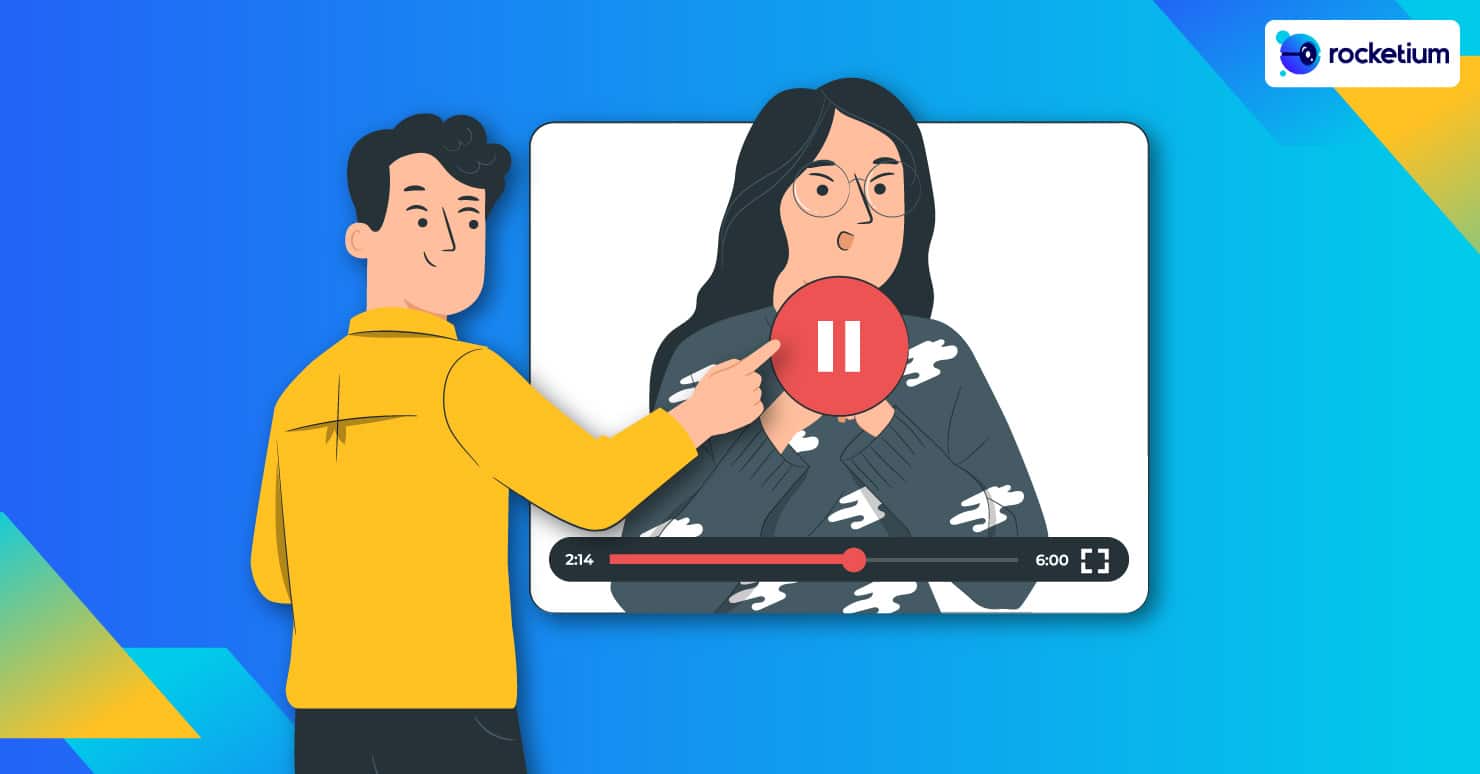Scale Creation with Creative Automation
Automate the creative production process with templatized creation, feed-based scale, and multi-point integration.
Learn more
Automate the creative production process with templatized creation, feed-based scale, and multi-point integration.
Learn more
These are exciting times for the EdTech industry. With Byju’s and Unacademy getting into the unicorn club recently and at least two more in the running, EdTech companies are the new blue-eyed boys of India’s startup sector.
The pandemic has certainly played its part in accelerating the demand: 10X growth expected in the next five years. However, as the online education ecosystem evolves, one thing is becoming amply clear- a great product alone does not guarantee success.
The companies at the top today invested a great deal of time and effort into building a strong brand to differentiate themselves and engage their audiences. From campus roadshows and door-to-door campaigns to viral video-based performance campaigns, they have done it all – with varying results.
For example, Unacademy was among the first brands to run Universal App Campaigns (UAC), and Re-UAC (retargeting UAC) campaigns to drive app installs and in-app conversions. They have generated some exceptional results for the company over time. However, conversion and churn remain high for most players in the industry, with the target audience being overexposed to ads.
If you are just getting started, the top priority for you, in the short to medium term, should be growth. Without it, thinking about scaling is pointless. Otherwise, you could potentially run into a situation where spending money on growth initiatives stalls product development and vice versa.
To avoid this, it is critical to understand how your customers perceive value and keep iterating until you find something that works. This means paying equal attention to quantitative data such as conversion rate and qualitative data such as customer personas. Focusing solely on the numbers can rob you of vital ‘human insights’ critical to decoding customer behavior. It is also essential to think about the end-users, i.e., students and the decision-makers, i.e., their parents, as two opposite poles in terms of engagement.
For example, Facebook ads may fail to convert if they are aimed at K-12 (Grades 1 to 12) students as opposed to their parents. To succeed, you will need a two-pronged EdTech marketing strategy- a mix of both inbound and outbound – to target each effectively.
That’s not all. You will also need to take into account the different stages of the customer journey to build an adaptable marketing strategy that will generate the ROI you are looking for.
In this article, we will analyze some unusual EdTech marketing strategies used by leading brands and distill the learnings from them.

Most EdTech companies leverage omnichannel marketing to engage customers. Social media and search marketing have proven their worth in terms of boosting conversions.
However, creating a consistent brand experience across web and mobile touchpoints is critical to driving engagement and conversion- something that brands- EdTech companies included- often ignore.
To plug any gaps in your existing content strategy, you need to map your business goals to customer expectations. This will help you develop the right visual elements and narrative to create on-brand experiences.
Remember: experimenting with different concepts is critical to find what works. If you are worried about how long it takes to produce high-quality visuals or videos, a creative automation solution can be the answer. It can help you streamline and scale your content with ease.
A viral multimedia brand awareness campaign launched by Practically, a leading e-learning app, garnered more than 32 million views in a short span of time. The visual elements of the campaign complemented the jingle-style messaging rather well.
Secondly, precise targeting is just as important. It can help you deliver hyper-personalized pitches and increase the odds of conversion. For example, LEAD School, a Mumbai-based startup, uses pin-code data to pitch local schools and colleges. Given the different pin-codes to target, a creative automation platform can enable you to scale campaigns by producing different pitch variations in a short span of time.
Personalization is critical when it comes to customer engagement. However, proper segmentation and data mining is required for it to work. By assigning a lead score to each user, a CRM allows you to develop dedicated strategies and campaigns for B2B as well as B2C customers across various demographics at different stages of the customer journey.
The result: higher conversion rates. By integrating your social media marketing campaign with email notifications, you can also boost ROI from both. For example, use your social media handles to encourage customers to sign up for your email newsletter and vice-versa. You can then use your email lists for paid targeted ad campaigns. Like OnlineTyari or LEAD School, this can make a major difference at the top of the funnel for your brand.

It is a fact that online channels are getting more and more crowded with each passing day. This is pushing EdTech marketing teams to invest in paid campaigns.
However, doing more of the same can provide diminishing returns over time. This is where live events can help. Hosting seminars and speaking at events is a great way for you to promote your brand and gauge customer sentiments.
In the post-pandemic scenario, webinars can be the perfect substitute for EdTech companies. With so many options to choose from, customers (parents and school administrators) are also likely to want evidence about how your solution can enhance academic performance.
Explainer videos can help answer some of them. However, a live webinar or one-to-one counseling session can allow you to build personal relationships with customers and make them more receptive to your message.
For example, EdTech powerhouse, BYJU’s has a team of counselors who meet students and their parents’ in-person and recommend the best learning program for their needs. On average, the team converts 30 to 50% of prospects, according to reports.
Given the company’s laser focus on making the onboarding process as smooth as possible, it is no surprise that its annual renewal rate is an incredible 86%.
EdTech brands find themselves in the not-so-enviable position of having to pitch to two or three distinct audiences: students, their parents, and schools. Each of these has unique needs of its own. Interacting live can help you personalize your pitch and shorten the sales cycle that- in the case of the latter- can take as long as 12-15 months to close.
In addition, you may be able to get real-time feedback from teachers who can even be persuaded to promote your product to their students and colleagues.
You could even pull off a coup by getting invited to Parent Teacher Association (PTA) meetings and networking events. This can help you get an on-ground perspective about what customers really want and what your competitors may be up to.

As the cost of paid marketing goes up, EdTech marketing teams are falling back on organic efforts. Blogging, answering questions on Quora, and guest posting on popular industry blogs like EdTechReview and encouraging honest third-party reviews, are great ways to build authority and target enterprise customers, in particular. Thinkific has aced third-party reviews. This particular Thinkific review drives good referral traffic to their website.
However, there is a discernible shift in user preferences when it comes to content marketing. Interactive video content is the latest trendsetter, proven to increase engagement by 47%.
Unlike conventional linear videos, users engage with quizzes, download links, and opt-in forms within the video, which increases the odds of conversion. The effectiveness of interactive video content is even higher if integrated into landing pages and email messages. These videos are a sure-fire way of increasing the average session duration on websites.
EdTech companies like Khan Academy have made good use of interactive video content to enrich the learning experience for users. The company’s videos are optimized for mobile and usually around 10 minutes in length, making them widely accessible and consumable. Secondly, users can play around and make changes to the characters within the videos to better understand subjects such as science and geometry.
Video can be a powerful medium for EdTech marketing teams to get their marketing messages across to the audience. It allows you to get up-close and personal with your audience in a way that written content can’t match.
For example, you can address customer objections in a much more relatable way via video case studies– complete with testimonials and customer reviews. Snippets from a video case study can also be inserted into your social and email content to drive engagement and conversion.
TV advertising can be expensive, and not everyone has the appetite for it. However, you can easily call upon the many thought leaders on your team to lend a hand with marketing online.
Most teams behind EdTech companies have several years of experience between them. Therefore, starting a podcast can be a great way to monetize it while sharing some unique insights with others.
Done right, it can help you build an engaged community of listeners that could turn into brand advocates. The best form of marketing there is!
A podcast can also be an excellent networking tool. Interacting with dozens of top-notch influencers you invite on your podcast can help you cross-promote to their audiences and amplify your marketing. It can complement your overall content marketing efforts besides driving SEO.
While many EdTech founders like Byju Raveendran, Divya Gokulnath, and Gaurav Munjal have featured on many podcasts so far, no brand seems to have an in-house one of their own as of today. This is a low-hanging fruit for many EdTech marketing heads who want to build engagement and loyalty with their audiences.

Podcasts are, by far, the fastest growing marketing channels since the pandemic. According to Forbes, an estimated 100 million people listened to a podcast each month in 2020. What makes it particularly attractive for EdTech marketers is that their median age is just 34. Podcasts are thus ideal for brands that want to grow market share and stand out from the competition.
Millennials are socially aware and do not mind paying more for products and services associated with a cause. In India, quality education is a privilege only a few enjoy compared to the majority of students in the hinterland.
Sponsoring the education of underprivileged or specially-abled students can thus yield rich dividends from the marketing standpoint. Meanwhile, also fulfilling your Corporate Social Responsibility (CSR) obligations.

To be sure, this will help you build context around how your EdTech product addresses a pressing socio-economic need.
iSchoolConnect is an AI-based educational course curation platform that helps students find and apply to the right colleges and universities. The company offers a $10,000 annual scholarship program, besides flight tickets and mentoring, to 10 students every year who lack the resources to study abroad. This strategy has helped it attract positive press, building strong brand equity in the process.
You could also consider partnering with other organizations to increase your social impact and double your publicity. For example, StuDocu, a leading online platform offering students the opportunity to exchange knowledge through note sharing, partnered with AdoptAClassroom.org to donate money for learning supplies to high schools.
Supporting the right cause can help you create a strong emotional connection with customers across the spectrum. It can help you authentically drive engagement and retention. You can even create a whole marketing campaign around such activities to shape customer perceptions about your brand.
Authentic marketing is so successful because it speaks to the values and beliefs of the audience. By putting your brand values into practice, you can instantly be more attractive to customers that share the same ideas.
EdTech companies will need to transform their approach to marketing in the post-pandemic era. Data-driven decisions will be critical to achieving ambitious revenue goals consistently and justifying larger budgets. In addition, as customer preferences evolve, you will need to adapt constantly to grow your market share.